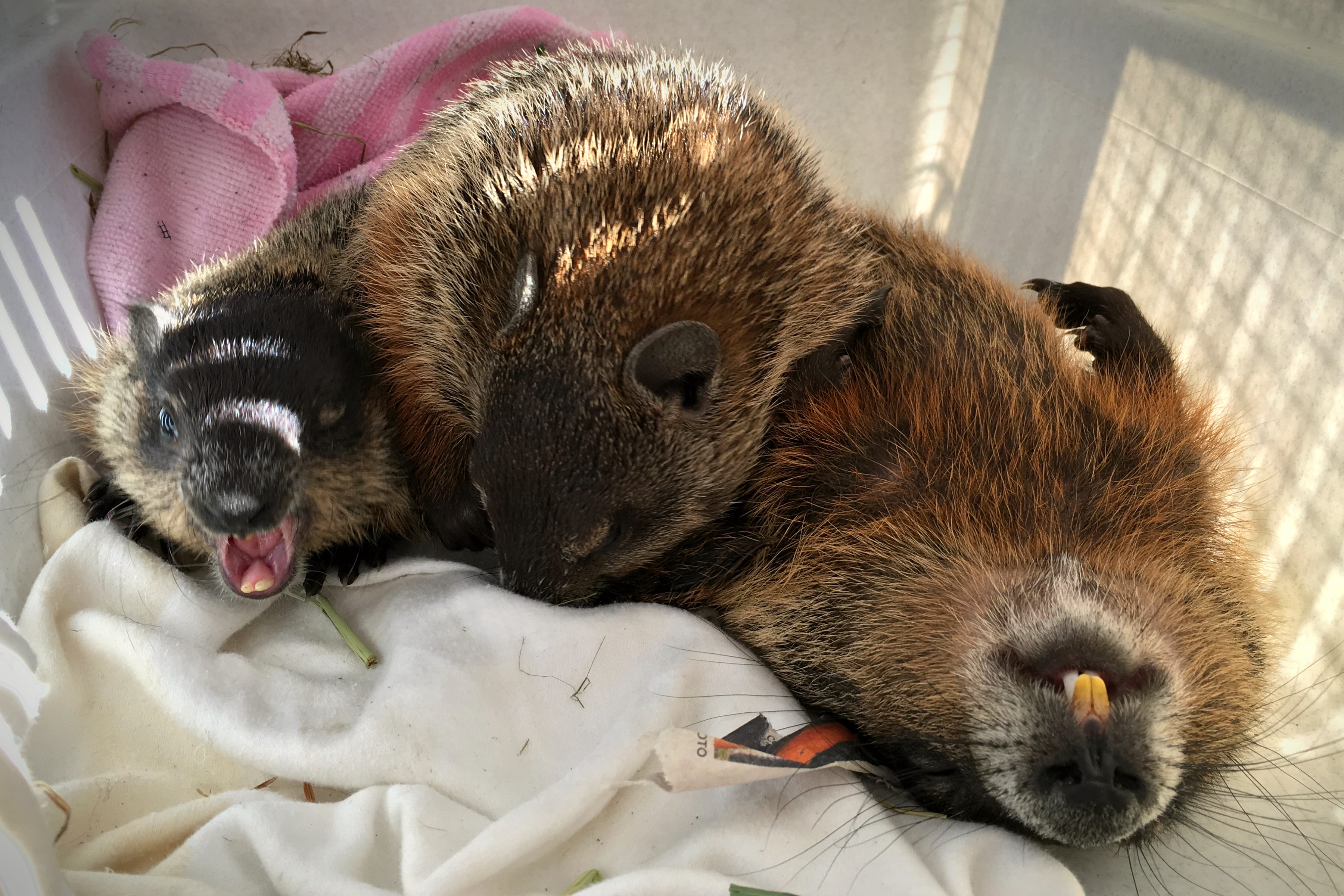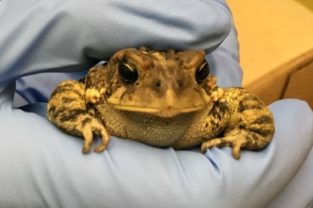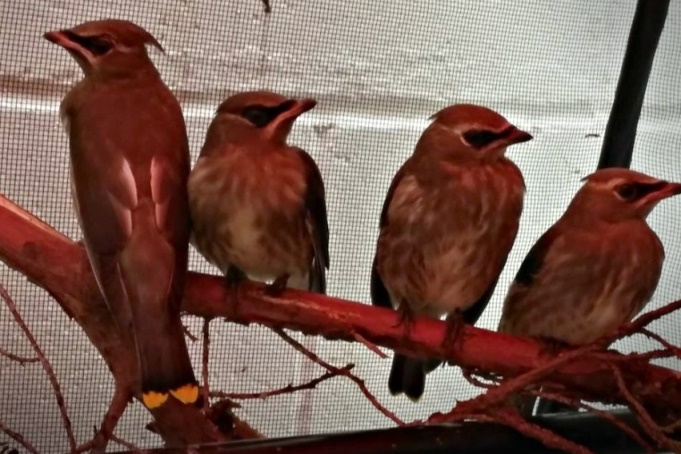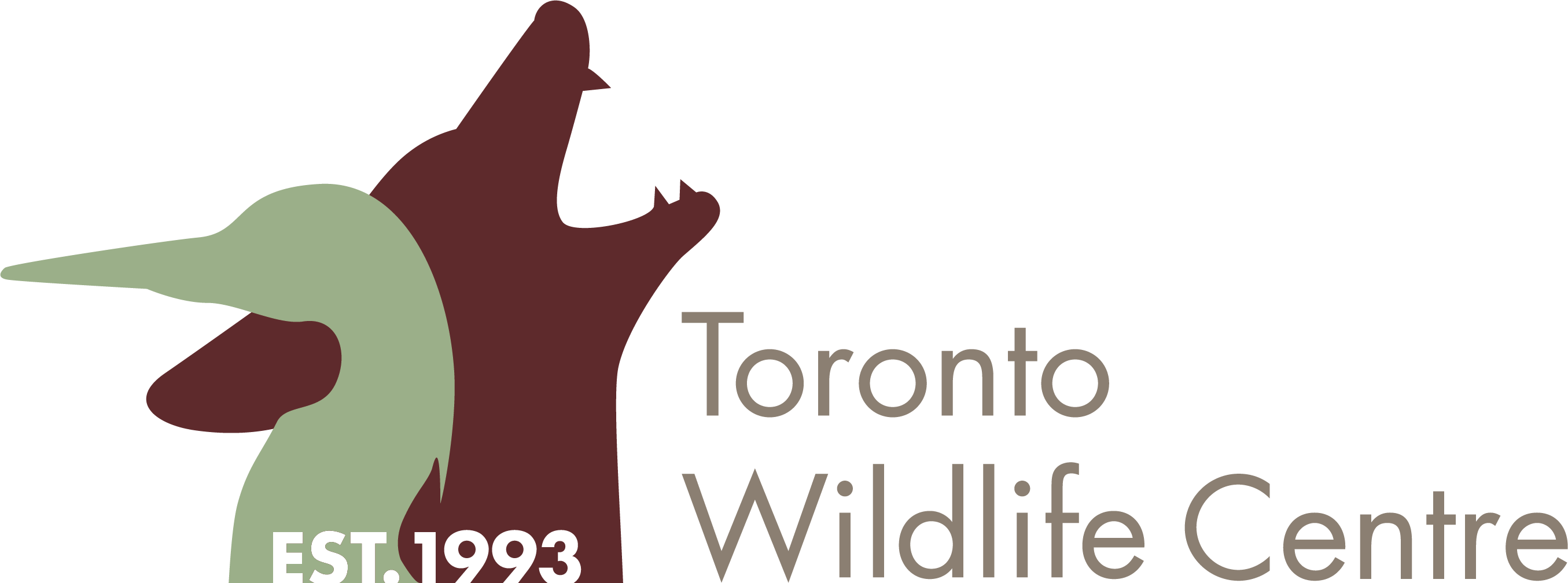By Victoria Badham, Education & Outreach Manager, Toronto Wildlife Centre
At Toronto Wildlife Centre (TWC) – a wildlife rehabilitation centre located in Downsview Park in Toronto – our wildlife hotline responds to thousands of calls from members of the public every year. Many calls are from people who are surprised to have found wildlife in their yard or around their home. Many are excited to learn just how many species can exist, and even thrive, in urban and suburban areas.
TWC, in partnership with LEAF (Local Enhancement & Appreciation of Forests) and OPG (Ontario Power Generation), is spreading the word on #BackyardBiodiversity to help people learn more about the flora and fauna with which we share our neighbourhoods. The campaign aims to share ways local residents can enhance outdoor spaces to make them healthy and inviting for human and wild visitors alike!

Even more, we want to share how our built environment, as well as human actions can cause wildlife to become sick, injured or orphaned and the best ways to mitigate potential dangers. After all, in creating an oasis of #BackyardBiodiversity, we want to make sure those making use of these newly naturalized spaces aren’t at risk of being harmed.
Burrowing animals, like these orphaned baby groundhogs who are being raised at TWC, can be affected when excavations or extensive digging disrupts their home, especially during spring and early summer when babies are too young to leave the den. Other wild animals, like snakes, hibernate underground in late fall and winter. So the best time to do any deep digging is late summer or early fall when babies and reptiles are less at risk.
 In creating your #BackyardBiodiversity, it’s important to consider who will be visiting your garden and any activities that could affect them. Pesticides, herbicides, fertilizers and other chemicals can be very dangerous for amphibians specifically, as well as other species. Instead, use natural gardening techniques such as composting and mulching to keep plants, trees and wildlife happy and healthy.
In creating your #BackyardBiodiversity, it’s important to consider who will be visiting your garden and any activities that could affect them. Pesticides, herbicides, fertilizers and other chemicals can be very dangerous for amphibians specifically, as well as other species. Instead, use natural gardening techniques such as composting and mulching to keep plants, trees and wildlife happy and healthy.
 Cedar waxwings love berries! If you want to attract this beautiful bird to your yard, your best bet is to plant native shrubs and trees that bear fruit. LEAF offers a great selection and can advise on what will work best for your yard. Just be aware that birds are particularly at risk of the built environment around them. TWC often admits songbirds that have flown into windows, unable to differentiate between the glass and the reflection of the sky and trees in the window. Creating visual markers on the outside of windows can save lives. Birds are also threatened by outdoor cats. Fledglings that haven’t learned to fly yet, like these ones at TWC who were found alone without parents around, are most at risk.
Cedar waxwings love berries! If you want to attract this beautiful bird to your yard, your best bet is to plant native shrubs and trees that bear fruit. LEAF offers a great selection and can advise on what will work best for your yard. Just be aware that birds are particularly at risk of the built environment around them. TWC often admits songbirds that have flown into windows, unable to differentiate between the glass and the reflection of the sky and trees in the window. Creating visual markers on the outside of windows can save lives. Birds are also threatened by outdoor cats. Fledglings that haven’t learned to fly yet, like these ones at TWC who were found alone without parents around, are most at risk.
 Eastern red bats, like these orphans currently being cared for at TWC, roost in the foliage of deciduous or sometimes evergreen trees. Planting native trees with the help of LEAF can help provide habitat for this species. Big brown bats are also regularly admitted to TWC, often when their colony is disrupted. These bats can sometimes roost in roofs and other parts of buildings. Research should be done before any eviction begins and should never be done during the cold fall and winter months when they are at risk of dying if removed, as well as during spring and early summer when moms are rearing young.
Eastern red bats, like these orphans currently being cared for at TWC, roost in the foliage of deciduous or sometimes evergreen trees. Planting native trees with the help of LEAF can help provide habitat for this species. Big brown bats are also regularly admitted to TWC, often when their colony is disrupted. These bats can sometimes roost in roofs and other parts of buildings. Research should be done before any eviction begins and should never be done during the cold fall and winter months when they are at risk of dying if removed, as well as during spring and early summer when moms are rearing young.
 Urban and suburban areas are also rife with raptors – birds of prey like this little American kestrel who was brought to TWC after being found out of its nest by the Eaton Centre in downtown Toronto. Even in the densest of urban areas, wild animals are making homes. Even so, kestrel populations are declining due to clearing of land. Planting new trees in your yard can help this species and so many others – but old, dead trees are vital to kestrels too. If safe, leave them standing for kestrels to use as nesting sites. This species also takes well to nesting boxes which should be put up well ahead of nesting season in late winter or early spring. Remember to never nail them to a tree as it can cause damage to the tree and counteract your best efforts.
Urban and suburban areas are also rife with raptors – birds of prey like this little American kestrel who was brought to TWC after being found out of its nest by the Eaton Centre in downtown Toronto. Even in the densest of urban areas, wild animals are making homes. Even so, kestrel populations are declining due to clearing of land. Planting new trees in your yard can help this species and so many others – but old, dead trees are vital to kestrels too. If safe, leave them standing for kestrels to use as nesting sites. This species also takes well to nesting boxes which should be put up well ahead of nesting season in late winter or early spring. Remember to never nail them to a tree as it can cause damage to the tree and counteract your best efforts.
No room for trees? No problem. Many people living in urban environments don’t have a “backyard” as such. However, any outdoor space attached to your home such as a balcony or porch can contribute toward biodiversity. If you’re going to naturalize a limited space, such as planting a tree in a raised box, make sure you pick the right species, which LEAF can help you with. They’ll consult with you to make sure you have enough space for the species to thrive, as well as ensure the roots are in enough soil to stay protected throughout the winter. But remember: Any green space will attract wildlife and depending on where you live, this could be problematic.
 TWC’s wildlife hotline receives dozens of calls every spring about families of ducks or geese that have nested in planters on balconies. While your naturalized space can be good for pollinators, these spaces can be life-threatening to newly hatched ducks and geese. Since babies leave the nest before they can fly, typically 1-2 days after hatching, they can become stuck in balconies and terraces that lack an open gap along the bottom. Even worse, mom sometimes nests 5, 10 or even 15 stories high! Babies jumping from this height often do not survive. When creating biodiversity in your slice of outdoor space, be sure to be vigilant in monitoring for signs of ducks and geese creating nests. Techniques to discourage nesting on patios, balconies and terraces can be found on TWC’s website. Make sure to comply with those techniques to maximize the positive aspects of your naturalized space, and minimize any hazards.
TWC’s wildlife hotline receives dozens of calls every spring about families of ducks or geese that have nested in planters on balconies. While your naturalized space can be good for pollinators, these spaces can be life-threatening to newly hatched ducks and geese. Since babies leave the nest before they can fly, typically 1-2 days after hatching, they can become stuck in balconies and terraces that lack an open gap along the bottom. Even worse, mom sometimes nests 5, 10 or even 15 stories high! Babies jumping from this height often do not survive. When creating biodiversity in your slice of outdoor space, be sure to be vigilant in monitoring for signs of ducks and geese creating nests. Techniques to discourage nesting on patios, balconies and terraces can be found on TWC’s website. Make sure to comply with those techniques to maximize the positive aspects of your naturalized space, and minimize any hazards.
Creating #BackyardBiodiversity is vital for a healthy and sustainable environment. Becoming informed about issues that may affect wildlife who visit your outdoor oasis is critical to ensuring they stay safe. For more information on these issues, check out the organizations listed below.
Toronto Wildlife Centre – A charity dedicated to providing medical treatment and rehabilitative care to sick, injured and orphaned wildlife. www.torontowildlifecentre.com
LEAF (Local Enhancement and Appreciation of Forests) – A non-profit organization dedicated to the protection and enhancement of the urban forest. LEAF offers programs that help you plant, care and give. www.yourleaf.org
FLAP (Fatal Light Awareness Program) www.flap.org
Cats and Birds www.catsandbirds.org
Bat Conservation International www.batcon.org
Cornell Lab of Ornithology – Nest Watch www.nestwatch.org


